#desktop development with C++
Explore tagged Tumblr posts
Text
if you ever wondered what learning programming is like
#jakethesnake rambles#programming#game development#i’m fighting the qt desktop library and it’s an uphill battle#c++ programming
4 notes
·
View notes
Text
Task Manager App: Effortlessly Develop One
Create a Task Manager app using C# WPF and the MVVM pattern. #WPF # Tutorial #MVVM #C-Sharp #Development #Developer #CoderTrend
Using C#, WPF and the MVVM architecture to create a stunning and Useful Task Manager Application Welcome to our comprehensive series where we delve into the creation of a sophisticated Task Manager application using WPF (Windows Presentation Foundation). This journey is not just about building an application; it’s an exploration into the robust capabilities of C# and WPF, crowned with the…

View On WordPress
#.NET Development#Advanced C Techniques#C Programming#Code Efficiency#Coding for Beginners#Desktop Application Development#Model-View-ViewModel#MVVM Pattern#Scalable Software Design#Software Architecture#Task Manager App#UI/UX Design#Visual Studio Tips#Windows Application Development#WPF Tutorial
0 notes
Note
Hey how do you do the color gradient thing for your dialog tags?
Assuming you mean these things, I've actually been meaning to make a guide of my own for a while lol.
For one, you can only do this on computer/the website of Tumblr! There's no option to select this stuff on the app.

STEP 1: CREATE A NEW DOC / GO TO SETTINGS

It opens a dropdown menu/whole screen full of options!
From there, select the "text editor" dropdown, which starts as displaying "rich text".

Select "HTML"

And it should change how the entire post looks!

STEP TWO: CHEAT
Yeeeeeaaaaah, so I use a website for this lol

I inserted my colors for faeries (#30853C) and Cloud (#6DC1B4) for my example of "these things" earlier. To make this easier, I most often have two windows open at a time while working on uploading my scripts to Tumblr.

To get colours to insert into the Text Colorizer website, you can use any kind of hex color picker or even this one website I've used to yoink "thematic" colors from photos!


Personally, I've developed a massive library of colors over time for this exact purpose lol. Using my old colors as a "base", I can change it accordingly to the kind of "new color" that I want for a specific character or thing!


(I'll use the website to also make gradients for "in-between" colors lol)
STEP 3: INSERT TEXT / DESIRED COLORS
To make Nova's gradient, I start with #A600D9, my color for Magic, and end with #F56745—their individual color. However, being as it's short, I'll use a quote from them instead lol.

Once you've inserted your text and colors, you will click in the text box I highlighted in red, ctrl+a and ctrl+c to copy it all, and go back over to your new tumblr post tab!
From there, you'll ctrl+v to paste the entirety into the HTML area, which pastes the code into your post!

AND VOILA!

You have gorgeous gradient text!
However, I want to give a fair warning and a bit of advice! If you didn't notice wayyyyyyy back when...

Tumblr warns that this all can break your formatting!
It doesn't do it too often, but take it from someone who does an obscene amount of formatting... it's 100% true.
STEP 4: CHEAT SOME MORE!
For this reason, I personally have a whole separate draft post full of my characters' colors (and names lol) that I use to copy-paste them in from rather than using the "html" text editor on every post!
I mentioned earlier I often have multiple windows open while editing? Here's what that looks like!

Additionally, I'll use a separate tab off on the left (my "current wip post" side) with the "html editor" enabled for me to copy-paste stuff!
(Also here's yet another example of how many colors I have)

Once again, you can ctrl+c these things to paste them into another tumblr post with the correct colors!
And it's ONLY possible to do on the website!!!

EXTRA INFO!
WARNING:
Tumblr will only allow each "paragraph's html to be so many characters long, so you can't have too big of anything in a gradient!

And by "anything"... I mean you really can't have that big of a gradient in general. RIP lol.
It straight-up won't save the post so long as you have that "overflow" in the character block! MAKE SURE YOU'VE FIXED IT, OR YOU CAN AND WILL LOSE ALL PROGRESS ON YOUR POST!
SINGLE-COLOR TIP:
You don't need the website for a single color! If you'd like, you can just change the "color code" within the html editor to change specific colors!

MAKE SURE COLORS CAN WORK ON DIFFERENT BACKGROUNDS!
On desktop, you can use shift+p while not on any sort of textbox to change the color pallet! I always do tests to see which colors work best before settling on any!

(Tho, the blue background SPECIFICALLY is nightmarish to work around. So if that's the ONLY thing I can't make work, I often ignore it and let you guys who use it suffer lmao)

(Hopefully this'll give you guys some respect for me and how much I do to make my posts aesthetic af lol)
Also hopefully this all helps???
divider by @cafekitsune
73 notes
·
View notes
Text
i need more mutuals who are into coding and engineering!! more info under the cut!!
I planned to become an electrical engineer like my stepdad but then I decided to change my path to programming. I'm currently studying at technikum (<- wikipedia link so I don't have to explain the whole polish learning system), programmer major.
this year I have exams from web development (10th Jan - theory, 16th Jan - practical exams) and next year I have exams from App development (both mobile and desktop).
I know C family languages, Java, Python and those ones I am currently using. I also know a bit of Kotlin and I think I will continue learning it.
For web dev I know HTML and CSS ofc but also PHP and JS.
Planning on learning more languages I can use for App and operating system development as well as just to know them cause I want to after this year's exams!
my learning list:
Lua (I heard it's easy but I can't really get myself to read anything about this atm idk why)
Ruby
Assembly
Rust
As for electrical engineering I don't know much tbh but I would like to learn! I just used CAD programs for technical drawings (dad taught me some basic things when I was still thinking about going his path) helped my dad fix things on his Solar farm, houses of our neighbors and I made a few very simple circuits for fun a few years ago. Now I'm mostly focused on programming but since I learned most of the things I need for exams I have more time to do whatever I want now!
I'd like to get to know more people so I can share and mostly learn new things since even though I'm coding for years I consider myself a beginner and I am a total beginner when it comes to electrical engineering.
I'm willing to be friends or at least mutuals with anyone who codes or makes websites or is in STEM! no matter what your specialty/interest is exactly and no matter if you are a total beginner or a professional ^__^
I'd also like to have some mutuals who are into old web development and retro computing!!!!!!!!
edit: I forgot but I'm also interested in physics and quantum physics
#dear.diary୨୧#stemblr#women in stem#stem#programming#coding#web development#web design#old web#retrocomputing#computing#engineering#technology#techindustry#computers#computer#templeos#terry a davis#terry davis#linux#open source#github#calculus#physics#quantum physics#mathblr#mathematics
38 notes
·
View notes
Text
I got a Steam Deck last year, and it’s such a great machine. It’s obviously inspired by Nintendo Switch, but it’s a lot better than a Switch.
The most important part is that it runs PC games. It’s fundamentally a Linux gaming PC in the form of a handheld console. There are a lot more games available than any console and and PC games both on Steam and GOG are a lot cheaper than console ones. You can get old or indie games for as cheap as 1-3 euro during sales. It’s a tremendous advantage for the deck over its console competitors.
And while the obvious intent of the deck is to get more people to buy games from Steam, it isn’t a walled garden at all. The deck launches into Steam when you boot it up, but you can go into desktop mode, and then it functions as a normal PC running a Linux distro. From there you can install Lutris or Heroic Games Launcher, and use it to easily install games you bought from GOG and Itch.io.
You can also do things like use the official dock or an unofficial usb-c hub to hook the deck up to a monitor, mouse and keyboard to use it as a desktop PC. Or you can hook it up to a tv to use it as home console.
The hardware is also a lot more powerful than a switch, the demanding triple-a games it can play is actually impressive. Although this comes with the natural disadvantage that it’s bulkier too. Putting more powerful PC parts demands more space for them. The deck is not something I bring with me outside. But then again I didn’t even do that with the 3DS, which was actually of a practical size to do that. The deck is portable enough that I can comfortably play lying in bed, which is how I always used my handheld consoles. So it’s perfect for me, but maybe not if you want to play it on the bus or something. It can probably be a fun addition to your luggage on longer trips though.
Of course, as mentioned, the Steam Deck uses Linux. This has both advantages and disadvantages. The main advantage is that it allows Valve to customize the operating system to make it fit with the machine it’s running on. The Deck’s SteamOS feels really well-integrated into the hardware, like how a proper console OS should be like. It’s not that dissimilar to how Sony used FreeBSD to make Playstation’s OS. Windows would not allow for this amount of customization and would not integrate as well.
And the open source nature of most Linux development allows Valve and the user to use existing open-source Linux software to their advantage. For example, the desktop mode is largely not a Valve creation, it’s an existing desktop environment for Linux, KDE Plasma. Yet it extends what the user can do with the deck to a great extent, like for installing non-steam games.
The main disadvantage to the Deck using Linux is that most PC games are built for Windows and don’t run natively under Linux. To run games built for Windows, the Deck has to run it through Proton, a compatibility layer which is Valve’s own gaming-focused version of Wine. Wine/Proton is far from perfect, sometimes games require extensive tinkering to work, or only run with serious issues, or don’t run at all, no matter what you do. Sometimes a game not working with Wine due to some random but serious issue that comes naturally from running a Windows executable on a Linux system via a compatibility layer. Sometimes it’s due to things like a multiplayer’s game anti-cheat system requiring access to the Windows kernel, and it will block a Linux pc from running the game because it has no Windows kernel.
This is however not as big a problem as it might otherwise be. Most games work, more or less. Valve has put a lot of work and money into both their own Proton and the Wine project as a whole, and they work a lot better than they did 10 years ago. Many run perfectly out of the box, because they are native, or play nice with Proton. Some require mere minor tinkering, like using a different version of Proton. And I generally don’t play multiplayer games, or if I do they don’t have draconian anti-cheats, so the games that are blocked because of anti-cheat are no big loss to me. The Steam Deck not running Fortnite is a plus in my book.
And we shouldn’t forget the Steam Deck verified system. Basically Valve employees check if the game runs out of the box with no issues on the Deck. They get a verified rating if they work with no issue, including both proton compatibility but also things like the controls working nice and the text being legible on the deck’s small screen. They also get a “playable” rating if the game runs to an acceptable standard but with tinkering required or other minor issues.
This is a good system. If you dislike tinkering, you can just buy and play games on steam with a verified rating, and the deck will work like a normal console for you, but with a lot cheaper games. It’s a good way to get people used to consoles into PC gaming, which is probably the point of the Deck.
And if you want more than deck verified games from Steam on the Deck, you are given the freedom to do it. I’ve gotten officially non-supported steam games to run on the deck by installing and using proton-GE and I’ve installed and played games from GOG.
The Steam Deck is really how a Linux PC for the common people should work. An easy and slick experience for casual users, but freedom and customization given to those that want it.
82 notes
·
View notes
Text






One of the most defining 16bit computers was introduced in June 1985.
ATARI ST 520
DESIGN HISTORY & STRATEGY
The Atari ST series was born in a turbulent time: Atari had just been acquired by Jack Tramiel, founder of Commodore, after leaving that company. Tramiel pushed for a quick-to-market product to compete with the Apple Macintosh and Commodore Amiga.
Development time: Less than one year — an aggressive schedule for a 16-bit GUI-based machine.
Initial models: The Atari 520ST was the first to ship, showcased at CES in 1985.
Innovative design: All-in-one casing (mainboard + keyboard), like the Amiga 500, but with better modularity (external floppy drive, monitor, etc.).
Former C=64 developer Shiraz Shivji led the design team. He tells a story about the Atari ST/Commodore Amiga history (source) "It is very interesting that the Warner Atari difficulties were due to Tramiel’s Commodore. The Commodore 64 was much more successful (I would say wildly successful) compared to the Atari Computers such as the 800 and the 400. We were also taking away sales from the video games division, the Atari 2600. Jay Miner was at Atari in the old days and was involved in the design of their products. He left Atari to design the Amiga. Atari had funded some of this effort and had an option to buy the Amiga. When we took over Atari in July 1984, the first order of business was to decide what to do with this option. The problem was that the Amiga was not quite ready and would need a lot of money to acquire. We decided to pass on Amiga, but this put enormous pressure on our own development team. Commodore, on the other hand, did not have an internally developed 32-bit graphics-oriented machine and did not have the confidence to develop the machine internally. They ended up buying Amiga for between $25-$30 million and spent a further $20 million or so and yet came out with a product a little after Atari. The roles were reversed, the Atari ST has a Commodore pedigree, while the Amiga has an Atari pedigree!"
MIDI AND MUSIC PRODUCTION
The 520ST included built-in MIDI ports — a revolutionary move. At the time, most other computers needed expensive third-party MIDI interfaces.
Key Software:
Steinberg Cubase – became the industry standard for MIDI sequencing.
Notator – early version of what later evolved into Logic Pro.
Pro 24, Dr. T's, and Hollis Trackman – widely used for composing, sequencing, and syncing synthesizers.
Used by Artists:
Fatboy Slim composed with the ST well into the 2000s.
Jean-Michel Jarre, Vangelis, The Chemical Brothers, and Underworld used it in studio setups.
Many studios kept an Atari ST just for MIDI due to its tight timing and reliability.
SOFTWARE ECOSYSTEM
TOS/GEM: A fast and responsive GUI OS that was very usable on 512KB of RAM.
Productivity apps:
Calamus DTP – high-quality desktop publishing
NeoDesk – an improved desktop GUI
GFA Basic – a powerful programming environment
Graphics tools:
Degas Elite, NeoChrome – pixel art, animation
Spectrum 512 – used clever tricks to display 512 colors
While the Amiga had better graphics and sound, many games were first developed for the ST, then ported to Amiga. Key games:
Dungeon Master – first-person RPG with real-time mechanics
Carrier Command, Starglider, Blood Money, Rick Dangerous
Flight simulators, strategy, and adventure games flourished
CULTURAL IMPACT
In Europe (especially the UK, Germany, France, and Hungary):
The ST became a cornerstone of bedroom coding, Demoscene, and music production.
Local software houses and users created a vibrant community around the machine.
The Atari ST was used in schools, small studios, and households well into the early '90s.
In education: The ST's affordability and easy-to-use software made it a favorite in European schools and computer labs.
DECLINE & LEGACY
By the early 1990s, the ST line was losing ground to IBM-compatible PCs and faster Amigas.
Later models like the STE, TT030, and Falcon 030 tried to revitalize the line, with limited success.
Atari shifted toward consoles (like the Jaguar) and left the computer market.
Long-term legacy:
The Atari ST's MIDI legacy lives on — it helped standardize digital music production workflows.
Many musicians and retrocomputing fans still collect and use STs today.
A vibrant retro software/demo scene remains active, especially in Europe.
#atari#atari st#anniversary#tech#technology#old tech#retrocomputing#retro computing#retro gaming#retrogaming#midi#cubase#calamus#notator#degas elite#16bit#Dungeon Master#Carrier Command#Starglider#Blood Money#Rick Dangerous#Flight simulators#80s#80s computer#fatboy slim#chemical brothers#jean michel jarre#vangelis
11 notes
·
View notes
Text
Sorry, I Love You - Part 8
I apologize for not posting last week. How about this longer chapter to make up for it?
Plot: You and Bucky have a good thing going - best of friends that also have more than a little chemistry between the sheets. Everything is fine until you develop feelings for the man who doesn't want a relationship. What will happen when Bucky finds out?
C/W: First day of HYDRA work, social gatherings
Word Count: 2,270
Tag List: NOW CLOSED! If you'd like to keep up with this story, please follow my blog and turn on notifications! ❤️ you :)
[Prologue][Part 1][Part 2][Part 3][Part 4][Part 5][Part 6][Part 7]
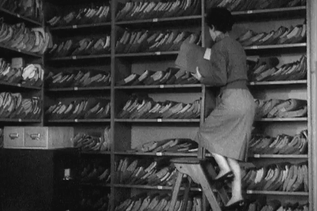
The next morning dawned bright and chilly. You only know this because you happened to pass by a window covered in frost on your way to one of the HYDRA labs within the facility.
Your first few hours on site had you running through various tests and exams to study your mental capacity and knowledge on the interest that HYDRA holds in the biology field. There was nothing shocking or unexpected that your new supervisors asked you, but the implications of what they expect from you sends shivers down your spine. You studied and memorized and read for weeks in preparation for this assignment last year, and you’re so glad that your brain retains this kind of information like a sponge – you’d have been disposed of on the spot if your background hadn’t checked out.
But now you’ve ‘officially’ joined HYDRA. The thought leaves a bad taste in your mouth, but you wash it down with the knowledge that what you’re doing is going to help the world by eliminating whatever disgusting and horrible work is being done here.
The plan is to spend as much time as it takes to gain HYDRA’s confidence in your abilities and allow you access to the higher level projects – the world-ending projects. This could take weeks. Or months. Hopefully not years? Being Bucky’s sister for that long would drive you insane.
“You,” a scientist snaps from behind their desk as you pass their open office door. You stop in your tracks and peer into the dingy office, noticing scuff marks and mysterious stains on the floor. The man’s desk has every square inch covered in files and papers. So much so that there is a noticeable curvature on the desktop, the cheap material unable to handle the amount of weight it has been subjected to over the years.
“Yes, sir?” you inquire.
He refuses to look up from his work, instead opting to dangle a set of keys from his fingers in your direction. “Go and grab the files for project 0B276HG21 in storage room C.”
Repeating the string of numbers and letters in your head, you take the keys from his outstretched hand and make your way to the storage room. There are so many rooms within the facility that you would be lost without the information your informant sent the team. But even with it, the facility has undergone changes since the last facility plans were uploaded, so you run into dead ends where there should be access doors.
You can only hope that your experience and knowledge will allow you to work your way up quickly – you don’t know how long you can stand to be a lackey. You roll your eyes at the errands you’ve had to run so far, but you know that the new person never gets given the big jobs on the first day.
And so the rest of the shift passes in the same manner and you arrive back at your and Bucky’s house with little energy and even less information.
“Don’t worry about it, doll,” Bucky reassures. “Slow and steady wins the race, right?”
“That’s such a stupid fable,” you grumble. “The hare would have won if it didn’t have such an inflated ego.”
Bucky grins at your disgruntled face before you flop your head backwards to rest. You release a sigh and relax further into the couch where you collapsed after walking in the front door, relieved to smell dinner simmering away on the stove since you arrived home later than expected and hadn’t had the opportunity to grab lunch.
You tilt your head and watch as Bucky shuffles around the kitchen. He’s long since showered after his time at the repair shop: his hair nearly dry and the strands sticking out in a way that you know he tousled it with his towel and let it finish air drying. The new shorter strands allowed for the minimal work to pay off in dividends because it was damn near impossible to remember how soft his hair used to be and not be able to run your fingers through it now.
Your fingers itch to reach out, but you grip the cushion instead. No one said that this would be easy. Well, no one has said it’d be anything because Nat’s mission has her radio silent and Wanda is busy spending time with Vis for you to complain about your one-sided love with someone who doesn’t know the feeling. You know that if they knew what was happening right now, they’d be plying you with ideas on how to survive this mission with minimal heartbreak.
“The food is done,” Bucky says as he gathers plates and utensils to set the table. “Are you coming in here or do you want me to bring you a bowl?”
Unfortunately, your best friends aren’t available to provide their wisdom, so here you are: suffering in silence with no outlet.
“I’ll be there in a second,” you respond. You unclench your fist from the couch’s fabric and stretch out your stiff fingers. Rising from your seat, you make your way into the kitchen and take a seat at the table as Bucky brings the pot over from the stove. You stare intently into the soup as Bucky ladles it into a bowl and sets it in front of you.
“Did something happen today?” he questions with a worried expression.
“You know HYDRA,” you tiredly reply. Looking up into his eyes for the first time this evening, you see the crease between his brows and mentally slap yourself. “I’m fine, Bucky. They don’t have me working on anything specific yet.”
“I know,” he says, “but just be careful with those people, okay?”
You smile up at him and nod your head, your heart squeezing in your chest.
You’re both silent through dinner with the exception of your compliments on Bucky’s cooking. It’s hard to clear the air after bringing up HYDRA and their actions, even in the vaguest way.
***
The week stretches on for an eternity, but eventually Saturday rolls around and you and Bucky prepare to meet the neighborhood.
You arrive at the restaurant right on time. Light pours from the windows and the snow on the ground glistens gold. As soon as you open the car door, you hear laughter and chatter forcing their way through the walls.
“I hate entering a party where everybody is already best friends with each other and then you’re left standing there like a loner,” you decry, already dreading the feeling of ‘otherness’ you will be experiencing in a few short moments.
“You’re not a loner,” Bucky laughs. “You make friends as easily as breathing.”
“Not true,” you counter. “I can make ‘friends’ with strangers, but it’s never anything real. I’m a spy, remember? It’s literally life or death to get people to like me.”
“Trust me, doll,” Bucky says as he looks intently at you from across the car. “People can’t help but love you.”
Heat rushes to your cheeks and you hope the light from the restaurant isn’t bright enough to reveal them to Bucky. The feelings squirming around in your stomach feel suspiciously like hope, and you can’t have that. You deflect any seriousness by laughing off Bucky’s comment.
“Tell that to all the people I’ve thrown in prison.”
Bucky calls your name with some disappointment and a slight frown on his face. You shrug your shoulders and motion towards the entrance. “It’s time to head inside. Come on.”
You walk away from him and lead the way into the building. Upon opening the door, a blast of warm, humid air hits you. The smell of beer and sweat sweeps up your nostrils, and the interior design reminds you more of a local dive bar than a restaurant. But everyone is laughing and having a good time, so you plaster a smile on your face and look around for the Gretens.
You see Christopher speaking to a short, skinny man, deep in conversation and barely acknowledging anyone else. Tessa stands in a corner surrounded by three other women, all of them laughing and having a good time. Bucky walks up behind you as you stand in the doorway and puts a hand on your shoulder.
“Divide and conquer?” he asks. You nod your head and make your way over to the group of women.
When you’re within ten feet of her, Tessa notices you. She beams at you and raises her hand to usher you closer.
“Ladies!” Tessa introduces. “Meet our newest neighbor!”
A round of introductions follows and you can’t help but admire how blatantly obvious these women are about their curiosity. Tessa seems to have already told them everything she knows about you, but they have to ask their own questions.
“And where’s that brother of yours?” one of them asks. “Tessa’s told us how handsome he is! I’ve got a daughter I’ve been trying to get out of the house for ages.”
You laugh through the twist of your guts, replying merrily, “Oh, I’m sure he’d appreciate the introduction.”
Before the woman can demand a personal introduction, Tessa interrupts when the entrance opens once again and lets in a blast of cold air.
“Petre!” She performs the same waving hand motion that brought you over earlier to the new arrival. “Come here!”
Glancing back, you see a tall man with dark hair and dark eyes making his way over to you. He stops in front of Tessa and wraps her in a quick hug.
“This is my son, Petre. Petre, this is our neighbor.”
Petre greets you warmly. “Hello, it’s nice to finally meet you. My mother hasn’t stopped talking about you since you moved in.”
You giggle when Tessa pats his arm roughly and shake his proffered hand. His skin is warm and dry, the skin on the back of his knuckles chapped from the winter weather. Tessa not-so-subtly draws the other women away from you and Petre and into another conversation, leaving you to speak with each other.
“Your mother seems to think we’d make a good pair,” you comment with a glance over at her.
“Ah, yes,” Petre says while fiddling with his shirt sleeves. “She’s been introducing me to every woman of marrying age. I think she’s afraid I’ll end up alone.”
You can’t help but laugh at his deprecating tone of voice. “We’re young – we’ve still got time.”
“Try telling her that,” he responds. “Being 30 and unmarried is one of the worst things you can be in her eyes.”
You chat with Petre between introductions for the next couple of hours. He sticks close by his mother which keeps him close to you, as Tessa demands everyone that walks by to greet you. Countless faces come and go, but there seems to be someone missing.
You turn to Tessa when the party seems to be winding down and a few people have started to leave. “Where’s your daughter?” you question.
“Kerri and Chrissie are right over there,” she nods, indicating the two young women in a cluster a few feet from you.
“Yes, I remember them from a little while ago. Where’s your other daughter? Sasha?”
At this, Tessa’s face drops and Petre looks at her worriedly. He places his arm around his mother’s shoulders and brings her into his side. “She’s not well,” Petre answers for his mother. “She has been sick for a while now.”
“Oh. Oh my goodness, I’m so sorry. I didn’t know.”
“It’s – it’s alright,” Tessa responds with a sorrowful smile. “She’s at home. Resting.”
“Well I hope she gets better soon,” you reply hopefully. Petre and Tessa nod tersely before steering the conversation off to something else.
It isn’t long after that when you feel Bucky sidle up next to you. He places his hand on your upper arm and pulls you closer into his side. “You ready to go?” he questions.
You hum and say your goodbyes to the people standing around you, promising to come out with Tessa to more gatherings. You and Bucky make your way back out into the cold night, the moon full and bright in the sky.
The car doors close behind you and Bucky starts the engine. You rumble along the road for a few minutes before Bucky says anything.
“Who were you talking to all night?” he asks you.
“Ah.” You sigh. “That was Tessa’s eldest son. The one she mentioned at dinner.”
“And?” he prompts.
“And…?”
“You were with him all night – what was he like? Anything seem off with him?”
You’re not exactly sure what Bucky is getting at, as he’d been talking with a couple of the same people throughout the night as well. “Well no, but it’s not like I could dig any deeper than surface level with so many people coming in and out of the conversation.”
Bucky hums noncommittally. You furrow your brow, but brush it off. “Did you find anything out from Christopher?”
“Not really. I did notice that one of his daughters wasn’t there tonight. Sarah?”
“Sasha,” you correct. “And no, I asked about her, as well. Petre and Tessa seemed really bothered when I brought her up: apparently she’s been pretty sick lately.”
“How sick?” Bucky asks.
“I’m not sure. It didn’t seem like they wanted to talk about it, though.”
“You think she’s been sick enough to require hospital stays?” he proposes, leading the conversation towards what could have possibly happened to the family’s financials that has lead to their worn down clothing and home.
“It’s worth looking into, isn’t it?”
Part 9
@jackiehollanderr @rabbitrabbit12321 @12345sebby @blackwood-bodecker-housewife @lauraashley93 @themorningsunshine @happinessinthebeing @nash-dara @calwitch @stany0url0calwh0res111 @pono-pura-vida @learisa @introverbatim @kentokaze @marvelogic @kaz11283
246 notes
·
View notes
Note
Hello there! do you still have an older version of evolwallpaper? I was late to the party and I can't install it properly anymore T_T
Hi anon, unfortunately I no longer have the old .exe 😩 I checked weibo, other users in China are having problems with it as well, my conclusion to this is that it's a broken app full of bugs, probably got nothing to do with regions (ノへ ̄、)
Babe because of your ask, I spent good 5 hours tonight trying to debug it, because I insist we all get the dynamic wallpapers!!!
Original guide // Deepspace PC guide
By the end of this tutorial, we should have a video like this applied to our computer wallpaper:

There's Nikki, MLQC, Deepspace and The Perceiver wallpapers.
New guide:
https://paperwall.papegames.com/
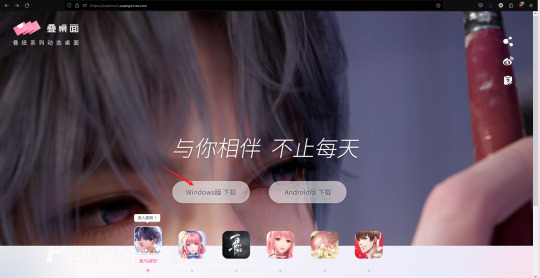
Same step as before, download this but don't install yet!
The following was actually hidden in their Q&A, you'll also need this for it to run, download the runtime version.
https://dotnet.microsoft.com/en-us/download/dotnet-framework/net48
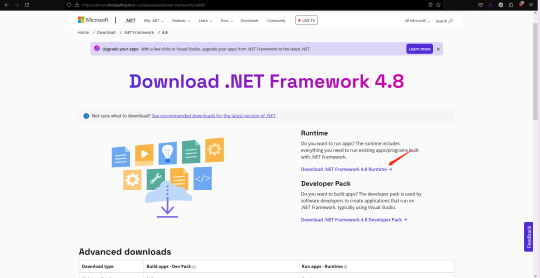
After you install the .NET Framework 4.8 go ahead and try to install the PAPERWALL .exe
→ If it works, great! We solved the problem!! 🎉 (You can skip to the section on the bottom on how to use the app)
→ If you get this error message, ugh congratulations, this is where I tried about 67 solutions for hours just so you don't have to
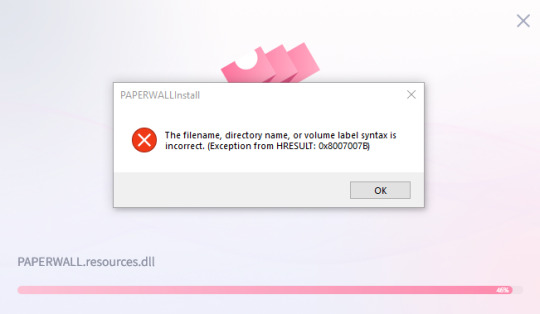
It's weird, because at this point, the thing have successfully installed on your local drive but it won't run.
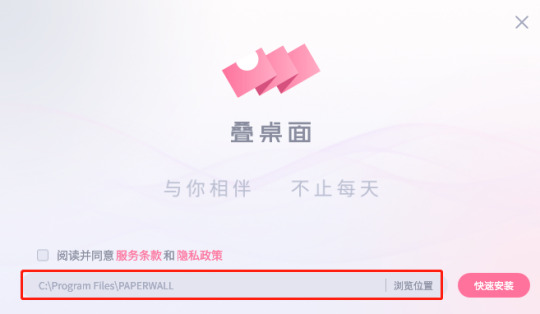
Let's go back a step, if you open the .exe again, take note of where it's at on your computer. For me you can see that it's in the C drive, I presume it'll be the same for you.

Find the folder, open it
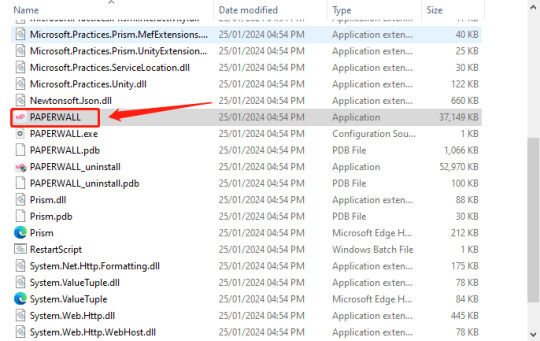
Open the app
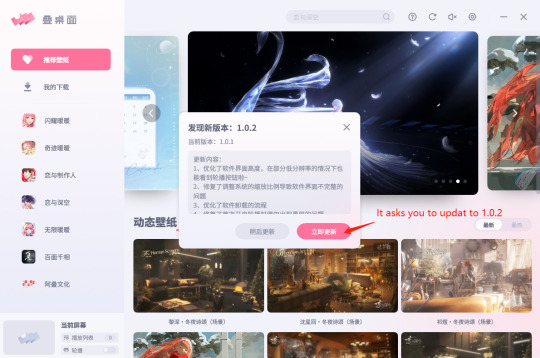
→ If it works, great! We solved the problem!! 🎉 (You can skip to the section on the bottom on how to use the app)
→ If you get the same error message, read on:
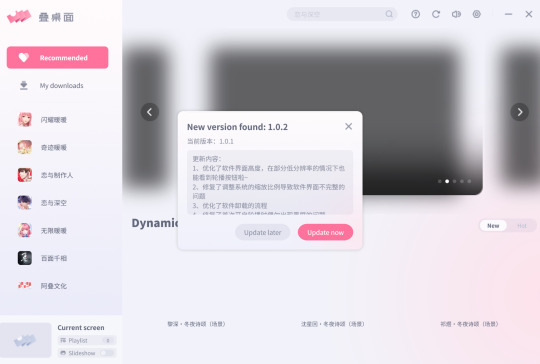
If the images haven't loaded in the 1.0.1 version it will most likely going to crash when you try to do anything on it, so read on:

Let go back to the C drive

We are gonna move this somewhere else, if you have a hard drive, paste it to your hard drive, if you have another drive on your pc, you can move it to the other drive. BUT DO NOT MOVE IT TO YOUR DESKTOP!!!! Because we practice good computer hygiene 🙏
Once you've moved everything away, open it back up and try to install it again in your new file location
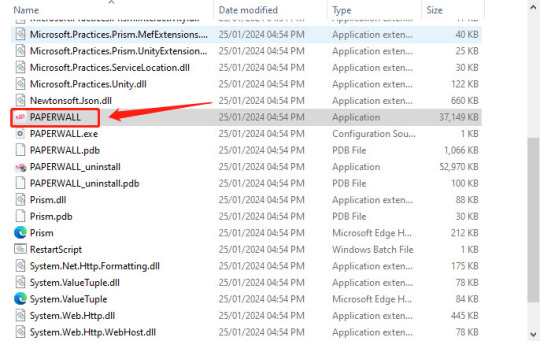
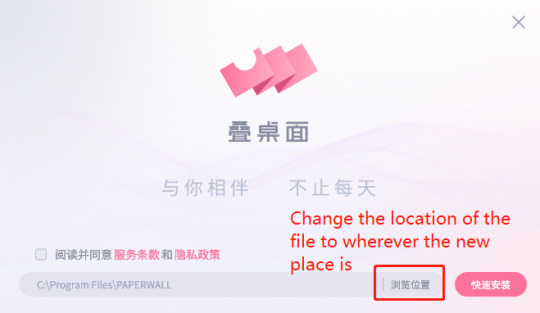
→ If it works, great! We solved the problem!! 🎉 (You can skip to the section on the bottom on how to use the app)
→ If you still get the same error message, I will send my portfolio to Paper Games to be a software developer in their office and write a new app

Once you get it running *fingers crossed* move the entire folder back to your C drive if you moved it to your hard drive, unless your hard drive is plugged in all the time.
If for whatever reason you get the "access to the path is denied" error message, try the right click and select the "Run as administrator" option.

For easy access:

Go onto your desktop, or wherever you want to access it from quickly and paste shortcut!! Remember it's the shortcut!!

───── ⑅ ♡ ⑅ ─────
How to use the app
The UI has changed a little since the original one, but it's easy to navigate.

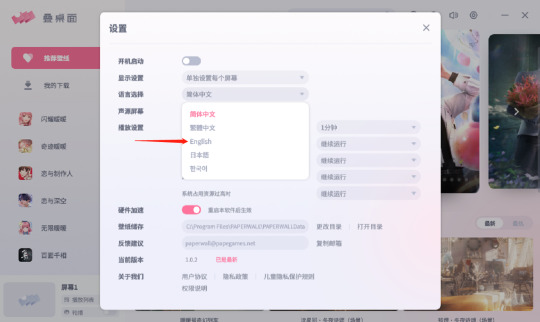
Change the language to English, it should reboot the app
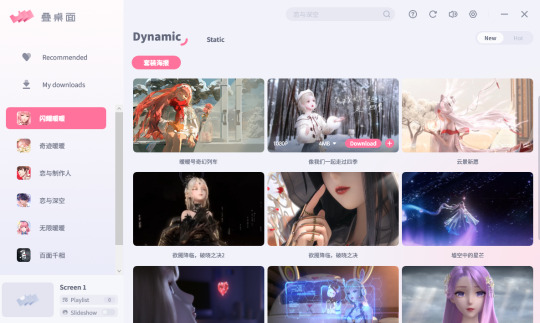
From here it's self explanatory
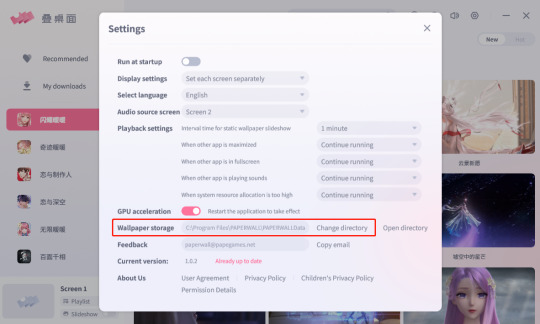
For good computer hygiene you might want to double check where the wallpapers are stored and change directory if needed.

If you're like me and have 2 monitors, this is what it'll look like with the wallpapers applied and the game opened, looks like I need a 3rd monitor for Shen Xinghui ⭐
(Desktop icons should show up, I just don't have icons on the desktop)
───── ⑅ ♡ ⑅ ─────
If you still have problems, check your PC specifications against the following that were recommended on the official site:
System: Windows10 or above
RAM: 1024MB or above
Processor: 1.66Hz Intel i5 or above
Graphics: HD Graphics 4000 or above
DirectX: 10
Secret third thing: you might be able to run it and have the lovely wallpapers but it suddenly goes glitchy or black screen... that's because of the faulty app, I've seen people mention it on weibo, it's not just you 😔
───── ⑅ ♡ ⑅ ─────
Feel free to drop me an ask with images if you still run into problems, hope this helps, until next time~ (✿◠‿◠)
Check out this tag for already answered questions #/wallpaper woes
#ask#anon#love and deepspace#love and deep space#love and producer#mlqc#shining nikki#love nikki#the perceiver#mr love queen's choice#live lockscreen#this is not a good sop its written all over the place but ive spent too long sorting it out and writing this up it'll have to do for now#if this helped you out i would appreciate it if you can reblog it!#you dont have to but its a good indication for me to post more things like this in the future for the english speaking fandom 💕
71 notes
·
View notes
Text
The Roddenberry Archive
Original Release: 2023
Developer: The Roddenberry Estate, OTOY
Publisher: The Roddenberry Estate
Platform: Browser
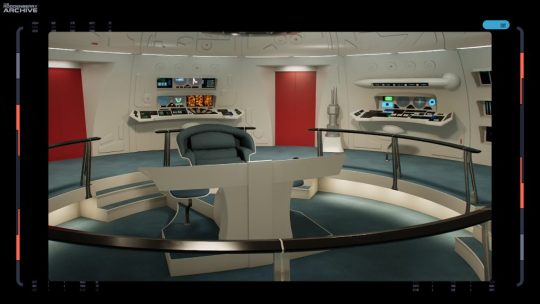
The ultimate bridge explorer is finally here. The Roddenberry Archives brings up digital recreations of a ton of Enterprise bridges, including concept bridges brought to life. The website provides a lot of information about the various different version of the Enterprise, and what the digital recreation of the bridge is based on.
All of these bridges can be explored in full 3D. It uses cloud technology so that you get the full detail no matter what PC you’re running (although it does have to be a desktop with Chromium browser) and can walk around, interact with some objects, sit down in chairs or turn on a fly camera. With the vast amount of detail, it’s a phenomenal experience and it’s amazing to look at the bridges in detail.

It starts off with a concept bridge: the XCV-330, the ring ship Enterprise seen in pictures in films and in Enterprise. It uses an early concept for the original Enterprise, with a round holographic table and a science room above it before moving on to the NX-01, which I loved seeing in closer detail, even finding doors I never knew were there.
Then onto the NCC-1701, which gets by far the most love. It has versions of the bridge starting with a concept bridge from early production then showing us the set from The Cage, Discovery, Strange New Worlds, the TOS pilot, TOS Season 1, TOS Season 2, Mirror Universe, TOS Season 3, a live action version of the bridge from The Animated Series, the bridge from the cancelled Phase II show, The Motion Picture, Wrath of Khan and two versions of the Kelvin version bridge, each one showing different versions of the bridge.

Then we get a look at a recreation of a wild concept for a cancelled film called Planet of the Titans, which featured a redesigned Enterprise from Ralph McQuarrie, which ended up inspiring the USS Discovery. It’s a lovely bridge, but not very practical.
From there we see the Enterprise A, B, C, D and E (with the D having multiple extra rooms), all looking absolutely stunning, but it doesn’t end there. It’s fully up to date with the bridges of the Enterprise F and brand new Enterprise G, which looks absolutely glorious. It ends the Enterprises with a new version of the Enterprise J featuring a see-through hull with visible cities, parks and water inside.
But it doesn’t end there, there’s a bonus Voyager bridge, with more to come in the future – hopefully we see the rest of the hero ships as well as other locations on ships, and some non-hero ships as well as alien bridges.
I look forward to the future updates of this software.
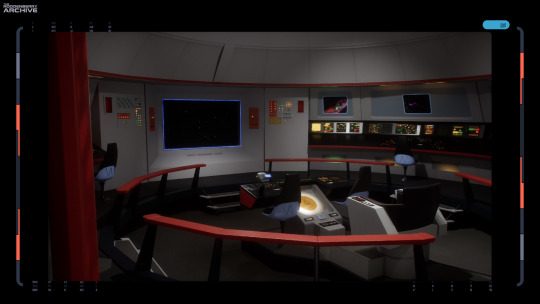

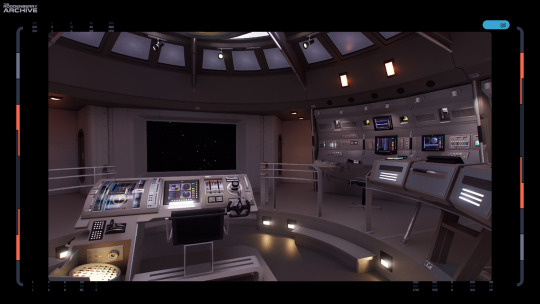
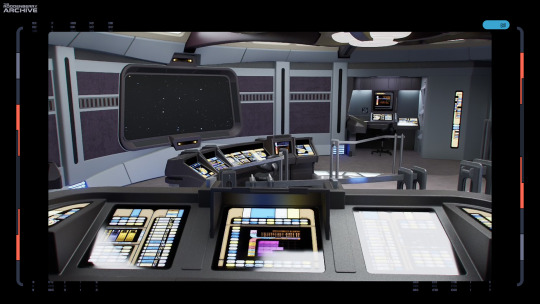
#star trek#star trek tos#star trek tng#star trek dsc#star trek snw#star trek tas#star trek voy#star trek pic#star trek tmp#star trek ent
99 notes
·
View notes
Note
As the person I follow who does reverse engineering, do you have any suggestions for finding resources on reverse engineering Android apps?
Specifically, there's an app I'm playing with, where after seeing the structure of the "export as Markdown" output I want to know what the internal structure and representation of the data is. The end goal of understanding it is to be able to add certain kinds of data dynamically, rather than up front. That's certainly doable typing in raw markdown, but being able to do it "app style" would be more convenient.
The google Play Store entry does not mention any open source licenses, or looking for the source code and hopefully a git repo or something would have been my first step.
(I'll probably need to bang together a crappy app to do what I really want regardless, but maybe this app's data structure would be more convenient than doing so with markdown.)
So, android stuff:
First you need the APK. You can do some trickery with your phone to pull it over the ADB connection if you install the android SDK, but generally I just google "app name APK" and you'll find some greymarket site that'll give you a copy.
Secondly, APKs are just ZIP files (JAR files, technically, but JAR files are also just ZIP files!). Unzip them and you can find lots of interesting stuff, often.

For disassembling/decompiling them, my go-to program is jadx. It's a java decompiler that's been around a while and can natively open APK files and decompile them. There's some weirder new APKs that it can't handle (something to do with a newer bytecode revision, I think?) but I can't recall the details on how you handle those. Those are rare, in my experience. jadx is pretty good, but you'll occasionally find methods or entire classes that it just can't figure out, and it'll give you a bytecode dump. I don't yet have a good solution for those, other than "get good at reading JVM bytecode".
If you're dealing with games, another useful thing can be UABE and dotPeek. These are unity/C# tools, but you would be surprised how many android games (and non-games!) are actually unity under the hood.
Bluestacks can also be useful, because it'll let you run the app on your desktop and that can be handy for things like running WireShark to log all network traffic.
Speaking of logging, the other handy thing I've done is enabling android developer mode on my phone to get to one specific option: Bluetooth HCI snoop log.
Now, actually getting that log is tricky and varies from phone to phone, because for some reason manufacturers like to move it around, but it's one of the best ways to reverse engineer bluetooth communication stuff. You basically turn on the log and everything your phone does to communicate with your Smart Toothbrush or whatever will be logged to a file, then you can yank that file over and stuff it into Wireshark.
So... hopefully some of that is a helpful start? I've not done a huge amount of Android reversing so I'm not super familiar with the tools used, but these are the ones I've got on hand for when I do.
also sorry for all the horny robotgirl posters who saw "android reverse engineering" in the tags and thought this was gonna be about taking them apart with screwdrivers and rooting around in their insides. Not today!
108 notes
·
View notes
Note
So how did you get the character files of the ol2 characters? I'm really bad with computer stuff and have no idea how to get them, lol. If you don't want to explain it that's ok, I just thought I'd ask!
You know what, sure. I can give a tutorial on that.
For those reading without context, anon here is asking where I got the sprite files needed for this tutorial. This is also essentially just a basic "how to decompile most Ren'py games" tutorial, just swap out all mentions of OL2 with any ren'py game of choice and it should work (within limits, there are some games where this won't work. But it works for both Our Life games)
This tutorial also requires a computer or laptop running Windows. There might be ways to decompile ren'py games from Mac but I'm not certain and that's not what this tutorial is going to focus on. Android users are just shit out of luck though, sorry.
Step 1: Open the folder containing the game's .exe file
This part differs depending on where you downloaded OL2 from.
If you downloaded OL2 from Steam: Right-click on OL2 in your Steam library, hover your mouse over the manage submenu and then clock "Browse Local Files"
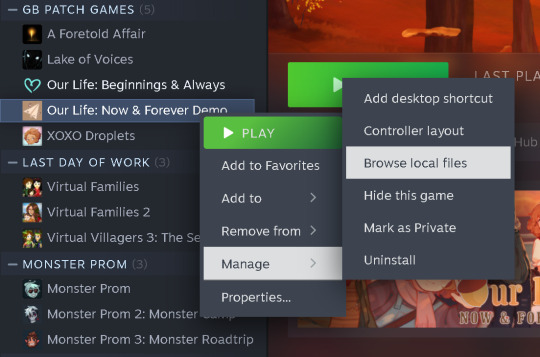
If you downloaded OL2 from Itch.io: Find where you extracted the game to. If you're unsure, the folder name should look something like "OurLifeNF-[X.X.X]-pc" but with '[X.X.X]' substituted with the version number of your game (for example "OurLifeNF-1.3.5-pc"). Once you find it, double click on the folder to open it
Once you've done either of those things, you should have a window explorer window up that looks something like this

(If you have files that aren't in this screenshot, that's normal, this is just what the folder looks like when you haven't opened the game)
Step 2: Grabbing the archive.rpa file
This is the file that contains all the game's data
From the window you opened up from the last step, double click on the folder labelled 'game'. In that folder, there will be a file titled archive.rpa. Copy that file (don't cut it or drag it out of the game folder, the original file needs to stay in there or your game won't run)


(You can also use the shortcut ctrl + c to copy)
Create a folder somewhere else on your computer, preferably somewhere like Documents, Downloads or Desktop where you can easily access it (to create a folder, right click inside whichever place on your computer you want to create a folder, then hover over the "new" submenu and then click folder). Then paste the archive.rpa file into that folder
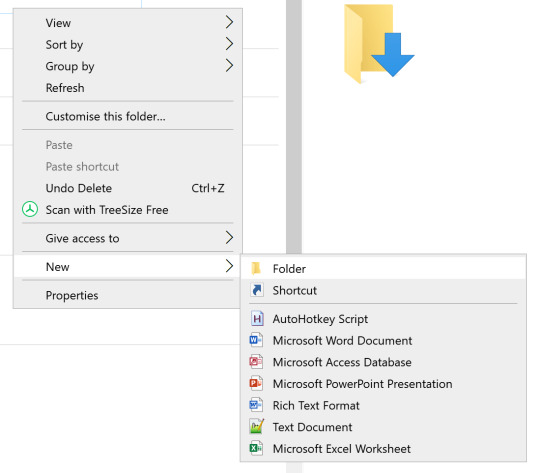
Step 3: Download RPA Extract
RPA Extract by iwanPlays is the software we're using to decompile the files. Click the link above, click 'No thanks, just take me to the downloads' (or you can give the developer money if you have the means to and want to show them support) and then click 'Dowload' on the first option in the list and download it to the same folder you copied the archive.rpa file to


Step 4: Decompiling the game
Next, drag the archive.rpa file to rpaExtract.exe. You'll probably get this window that pops up.

Click "More Info" and then, at the bottom, click on the "Run Anyway" button that shows up
After that, a command window will show up with all the files being decompiled. Just wait until its down and then exit out of it.
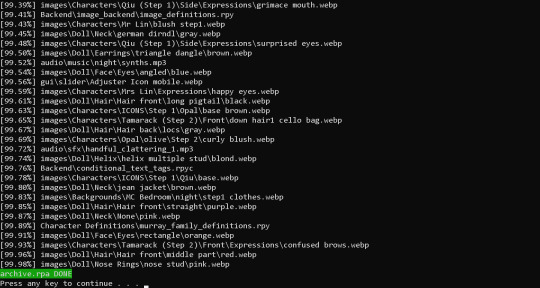
Ta-da, you've got the decompiled files! The sprite files are in the Characters folder which is in the images folder. Have fun!
37 notes
·
View notes
Text
I am so done with all of this for tonight. Time to take out some frustration in games, and/or try to just chill and watch some videos. Preferably not tech-related.
But, I did find it darkly funny in a way that the best solution I have found so far to actually keep useful access to several years' worth of Diabox data, is to finally get a Nightscout instance up and running properly. Which I have kept meaning to do anyway. Should be able to import that data, and keep some continuity with the current xDrip+ install. (Which was kinda developed for use with Nigjtscout.)
That would of course also make it easier to, like, put a handy CGM display widget on my computer desktop or feed it to a variety of other displays. Which was my original draw.
Looking into it again, I am sorely tempted to just use a hosting service like NS10BE and have done with it. It's well worth €50 a year for me not to have to fuck around with that anymore, and they do seem to have a good reputation.
But! But! With my hobbled filthy foreign devil bank account and its debit card, I cannot pay the nice tech company! 🤣 I am blocked from any repeating subscriptions, and Maestro doesn't work with some payment processors anyway.
So yeah, either I am going to have to ask Mr. C to pony up for that--OR I am going to have to eat my pride and ask him to please help get the existing middling-DIY attempt up and running properly. I mean, it probably wouldn't be a major problem for him to set up something completely self-hosted in house, never mind sort out whatever the hell OTHER error I started getting trying to access that database once the one I mentioned there was out of the way.
But, my "just knowledgeable enough to break shit in interesting ways" tinkerer ass really avoids asking for any technical help from the Household IT Professional on his own time. I feel like a dumbass, and he spends MORE than enough time and energy on frustrating tech problems as it is.
Anyway, I did find it darkly hilarious in the context of some ongoing frustrations which are currently really flaring up here, that I cannot even reasonably bail myself out of this little cluster of aggravations for €50 on my own.
15 notes
·
View notes
Text
Polaris Computing Ltd., more commonly known as simply Polaris, was founded by Stanford graduate students Claire Tashi and Joel Lovinger in 2002. The company rapidly rose to prominence after the release of their sophmore operating system Andromeda in 2006. Users praised the system for its balancing of desirable traits from competing companies, namely Apple and Microsoft. Blending the heavy lifting of Windows with the visual sensibilities of Apple and a level of customization offered by neither allowed the small tech startup to skyrocket into financial success and industry acclaim.
Andromeda was a major improvement over its debut OS Centauri (released in 2003), marking major shifts towards a focus on smooth and instinctive UX and UI. The desire for a smooth and highly personalized user experience was Claire's contribution, and something that truly set Polaris's products apart. Joel's contribution was in functionality and capability, pushing their OS products to the limits of technical capability.
Eventually the company began creating its own devices to pair with its software, a way to further engage devoted customers and bring in more sales. While their operating systems could be installed on any device, the launch of the Cygnus desktop computer in 2008 was a foray into a new era of the company. Joel carefully oversaw the technical details of its design, the hardware used, and together with Claire personally monitored the progress of software development for the launch of Lyra, the follow up OS to Andromeda that would debut pre-installed on all Cygnus computers. Shortly after that Polaris released their first laptop, the Gemini. It would also use the Lyra OS, and promised to replicate as much of the experience of a desktop as technologically possible. The design ethos of the company persisted, and accessorizing the Gemini became increasingly popular. The company began to sell official cases and protective equipment in a variety of colours, patterns, and materials, along with laptop bags, headphones, mice and other accessories.
What would truly cement Polaris as an untouchable tech giant was an early wave smartphone meant to compete with the Blackberry: the Lynx. Released in 2009, for a while the Lynx was the only smartphone to properly compete for the market owned by RIM and the Blackberry and Apple's iPhone. Multiple versions of the Lynx with slight modifications were released, along with models in all sorts of colours. The parade of phone cases and charms and holders would further contribute to the individualization continued.
As the market shifted heavily in favour of touchscreens, and iPhones became the dominant cellular device on the market, Polaris too shifted with the tides. In 2011, the company released their own version of a touchscreen phone, essentially a miniature tablet with added features that carried a more true-to-desktop version of Polaris's OS: the Acrux.
This pattern of call and response would continue over the next decade as the company began to balloon to titanic proportions. Its value would grow in a way that seemed exponential. With solid leadership and a better-than-average public reputation than most tech companies of the era possessed it seemed there was nowhere but up, up, and up for Polaris and its C-suite executives. Shortly before the 20 year anniversary of Centauri's release, and what was sure to be a monumental milestone for its leaders, Claire would slowly phase out of the company. With her shares sold and redistributed, and Joel able to secure over approximately 52% ownership of the company's shares, he remained on board as the sole CEO of the company and its single largest shareholder.
This shakeup was met with Joel's very own press tour; interviews in magazines, glowing reviews on tech news sites for new Polaris products, and more public appearances and charitable donations. Amid this flurry of good press was the nugget that would explode into a major story in the tech world: Claire was out at Polaris, and the Lovingers had separated. As far as the public knew it was amicable, quiet. Things have carried on, but whispers in the network have revealed cracks in the foundation. With Claire came a small exodus of loyal supporters, particularly those aware of the impending divorce. New hires worked to Joel's advantage, giving the impression of a growing and thriving company. Polaris still pulls in unconscionable amounts of revenue every year, lining Joel's pockets nicely. So far he has been unscatched, the victor, a man on top of the world.
3 notes
·
View notes
Text
chatplots interest check + beta testing!
hey, pssst! touya-nii would like to have a little chat with you. well? what are you waiting for! go talk to him!
note: currently, chatplots works best on a mobile device! you can find the faq beneath the cut! <3 please read through the entire thing before sending in any questions or playing the game; there's a lot of important info in there about how the game works!
click here to submit your feedback!
WHAT IS CHATPLOTS?
chatplots is a simulation game where you can enter into various situations with specific characters and 'message' them. each chat has multiple choices for the player to choose and at least two endings. your choices and behaviour throughout the chat will influence how the character reacts and responds to you, and will ultimately determine which ending you get! it is essentially like a playable oneshot! chatplots IS NOT AI. it is a game that was written by me and developed by my boyfriend. each conversation was painstakingly crafted by me; it is all my writing, and it will always be completely and entirely written by me.
HOW DOES IT WORK?
chatplots can be downloaded as a web app on your home screen if you'd prefer to have it on your phone! (this is the option i personally recommend hehe) but chatplots can also be played on any device in any mobile or desktop browser, accessible through this link: https://chatplots.inkyclari.com.
how to download it on ios:
go to chatplots.inkyclari.com
tap the share icon (on safari: the little square with the upwards arrow, in the middle of the bottom of the screen, next to the bookmarks option; on chrome: the little square with the upwards arrow at the end of the address bar)
scroll down and select 'add to home screen'
you're done!
how to download it on android:
go to chatplots.inkyclari.com
on chrome, press the three dots in the upper righthand corner
click 'install app'
you're done!
here's how it'll all go down once the chat is open:
touya-nii will send a message (or several messages)
the response button (the button with the little paper airplane) will begin pulsing when you can respond back to him
pressing the button will open up all of your available response options. you can then choose which one to send back to him.
this will continue until you reach the end of the game. the response button will begin pulsing with your ending, which is a piece of prose 700-900 words long. the chat takes about 10-15 minutes to play though once.
notes:
touya-nii will refer to you by name. the name you input at the start of the game will be the name he uses, though this name can be changed at any time in the settings (the little gear in the bottom left corner!). also! check out the settings while he's still typing for a cute lil surprise ehehe c:
touya-nii will behave like a real human throughout the duration of the chat. he takes a moment to read your message before he responds, and the time it takes him to type out a response is akin to that of a real person—meaning if his response is longer, he will take longer to type it than a response that is only a word or two.
THINGS TO KEEP IN MIND:
this is a beta, which means it is not the finished product.
the chat you are playing is technically only half of what the full chat would be; you are only playing one route with a few different branches and two variations of the same single ending. (in other words, there are several different ways to reach the same ending, and each branch has slight variations).
a full chat would have at least two separate routes within the same scenario/setting, and at least two different endings.
we encourage you to play through the chat several times to discover which choices yield which results, and to explore all touya-nii has to say!
WHAT IS THIS SHORT KEIGO CHAT?
the short keigo chat is a sfw test chat i made specifically for my best friend. it only takes 1-3 minutes to play through and has options that are specifically tailored to my best friend's personality and tastes. you are welcome to play through it as well if you'd like! just bear these things in mind hehe
WILL OTHER CHARACTERS BE ADDED IN THE FUTURE?
yes, of course! any of my iterations of ANY character has the potential to be added to the game in the future. i am also open to taking suggests and prompts from you all for future chat scenarios!
HOW MUCH WILL THE FULL GAME COST?
chats would either be sold on an individual basis, where you can buy each chat separately for $4-$6 USD depending on the length, complexity, number of endings, etc OR through a monthly subscription of $7 USD, enabling you to have continual access to the entire catalogue of chats as it grows, with the minimum number chats being released at least two per month. please let us know which option appeals to you more right here! <3
WE NEED YOUR FEEDBACK!
after you've played through the chat a couple of times, we would be extremely grateful if you would take a moment or two to answer a few questions in order to help us gauge interest and further determine the direction we should move forward in. you are also, of course, always welcome to send your feedback and thoughts through my ask box!
we can't wait to hear from you, and we hope you enjoy the beta! <3
#SCREAMING#IT'S BEEN SO LONG IN THE MAKING i can't believe its finally here!!!!!!!#i hope you guys have fun with him!!!#please heed the warnings at the beginning of the chat of course as always#inky.chatplots
60 notes
·
View notes
Text



FujiNet: The First Five Years – Jeff Piepmeier
Five Years of FujiNet! This is the year of new “bring-ups,” exciting advances, and more features for FujiNet, the multi-peripheral network device for vintage computer enthusiasts. FujiNet made its way onto two new platforms and will be demonstrating the compact Macintosh (68k) and the TRS-80 Color Computer prototypes. The team made firmware and hardware advances for the Apple II+/e/c/gs and Commodore VIC-20/64/16/Plus4 and will be showing the Apple II production FujiNet device. Atari 400/800/XL/XE remains a perennial favorite seeing the development of aNode Desktop and moar High Score Enabled games – you can compete with your friends and other Atari gamers! The game lobby and original multiplayer games emerged onto the scene leveraging the distinctive network device and protocol adaptors. More vendors are producing devices enabled by FujiNet’s open source licenses making FujiNet more widely available. The team is more active than ever and looking forward to reaching all vintage platforms.
VCF East XIX
16 notes
·
View notes
Text

Ubuntu is a popular open-source operating system based on the Linux kernel. It's known for its user-friendliness, stability, and security, making it a great choice for both beginners and experienced users. Ubuntu can be used for a variety of purposes, including:
Key Features and Uses of Ubuntu:
Desktop Environment: Ubuntu offers a modern, intuitive desktop environment that is easy to navigate. It comes with a set of pre-installed applications for everyday tasks like web browsing, email, and office productivity.
Development: Ubuntu is widely used by developers due to its robust development tools, package management system, and support for programming languages like Python, Java, and C++.
Servers: Ubuntu Server is a popular choice for hosting websites, databases, and other server applications. It's known for its performance, security, and ease of use.
Cloud Computing: Ubuntu is a preferred operating system for cloud environments, supporting platforms like OpenStack and Kubernetes for managing cloud infrastructure.
Education: Ubuntu is used in educational institutions for teaching computer science and IT courses. It's free and has a vast repository of educational software.
Customization: Users can customize their Ubuntu installation to fit their specific needs, with a variety of desktop environments, themes, and software available.
Installing Ubuntu on Windows:
The image you shared shows that you are installing Ubuntu using the Windows Subsystem for Linux (WSL). This allows you to run Ubuntu natively on your Windows machine, giving you the best of both worlds.
Benefits of Ubuntu:
Free and Open-Source: Ubuntu is free to use and open-source, meaning anyone can contribute to its development.
Regular Updates: Ubuntu receives regular updates to ensure security and performance.
Large Community: Ubuntu has a large, active community that provides support and contributes to its development.
4 notes
·
View notes